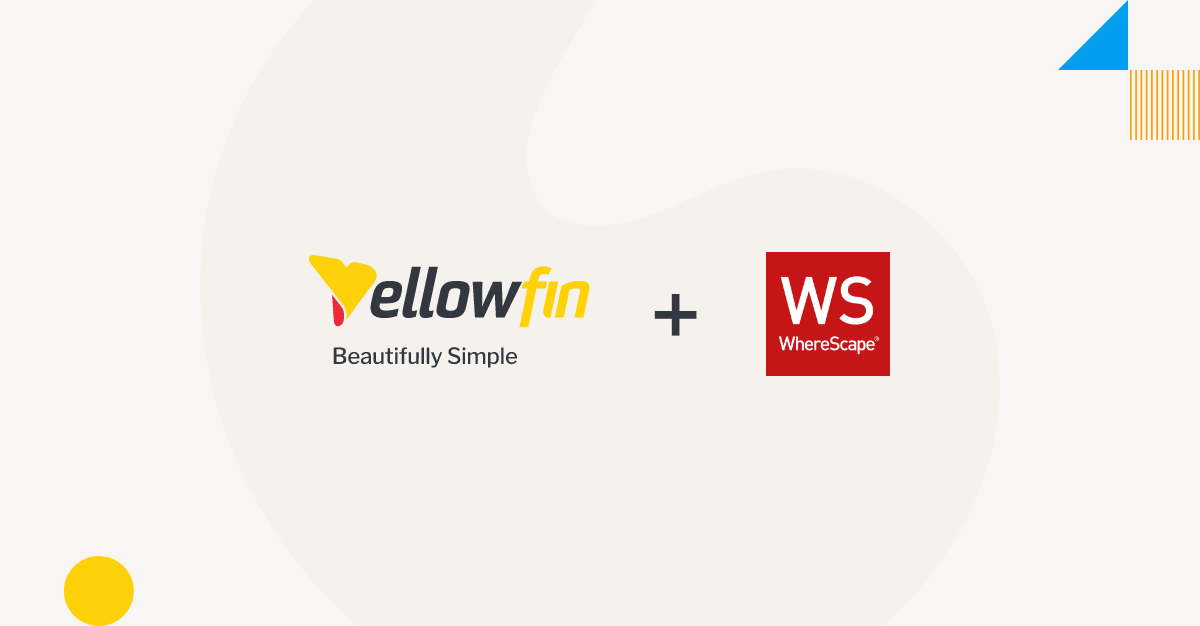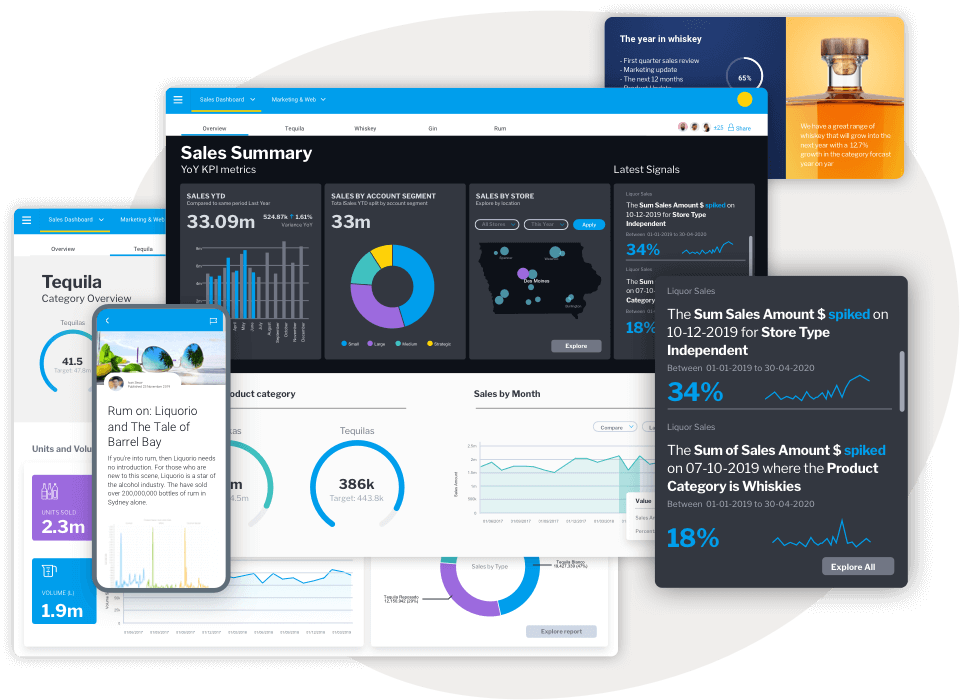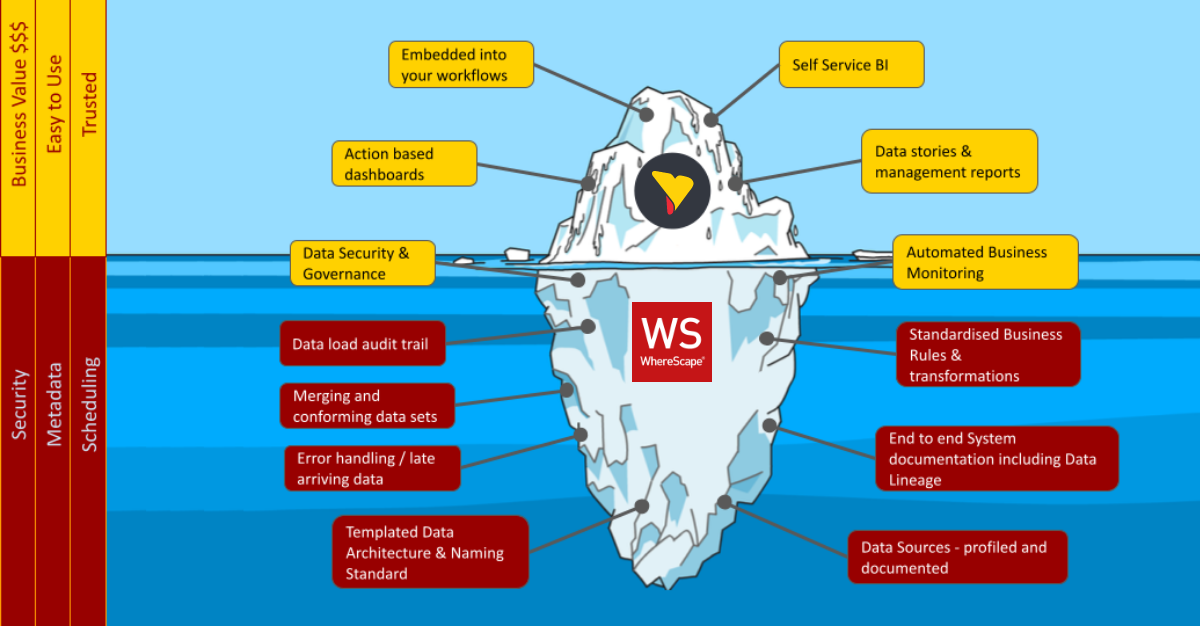
Why Yellowfin and WhereScape are a Great Combination
Within the Idera group, many of the brands and products complement each other. Two such market-leading brands are Yellowfin and WhereScape. But, how do multiple tools help deliver even more significant value, and should you look at separate solutions or a combined solution from a single vendor?
WhereScape specializes in data integration and automation; it can streamline the data processing pipeline, reducing complexity and potential bottlenecks, i.e. quickly getting data from various sources into a standardized, well-structured format, ready for analysis.
This optimization allows Yellowfin, a robust business intelligence (BI) platform, to focus on delivering powerful visualizations and analytics without being burdened by complex data processing tasks. This separation of responsibilities to best-in-class software can improve the overall solution's performance and efficiency.
The Benefits of a Data Warehouse with a BI Platform
With this high-level overview in mind, let's look further into how a data warehouse with a business intelligence (BI) platform offers several benefits:
- Centralized Data: A data warehouse consolidates data from various sources into a single, unified repository. Done correctly, this enables better data governance, data quality, and consistency.
- Improved Data Analysis: When your BI platform includes a data warehouse, users can access and analyze data more efficiently. With all the data they need in one place, they can easily create interactive reports, dashboards, and visualizations, allowing them to gain valuable insights and make informed decisions.
- Faster and Easier Reporting: A data warehouse optimizes data retrieval and storage, enabling faster query performance. This facilitates quicker report generation, reducing the time and effort required to extract meaningful information from large datasets.
- Scalability: Data warehouses are designed to handle large volumes of data and accommodate future growth. They provide scalability options to support increased data storage and processing requirements as the organization expands.
- Historical Analysis: Data warehouses store historical data over extended periods, allowing users to analyze trends, patterns, and historical performance. This long-term perspective can help with forecasting, identifying opportunities, and understanding business trends.
- Data Integration: Data warehouses facilitate data integration by consolidating data from disparate sources, such as databases, applications, and spreadsheets. This integration eliminates data silos and enables a holistic view of the organization's data.
- Data Consistency and Integrity: A data warehouse applies data cleansing, transformation, and validation processes, ensuring data consistency and integrity. This helps in maintaining accurate and reliable data for decision-making.
- Self-Service Analytics: BI platforms often offer self-service capabilities, allowing business users to perform ad-hoc analysis and generate reports without extensive technical expertise. This empowers users to explore data independently and gain insights on demand. Allowing BI Users to run exploratory queries directly against operational systems would risk compromising operational performance.
- Enhanced Decision-Making: By providing access to timely and relevant data, a data warehouse with a BI platform enables better decision-making at all levels of the organization. It supports data-driven decision-making by providing accurate and actionable insights.
- Competitive Advantage: Leveraging a data warehouse and BI platform can provide a competitive advantage by enabling organizations to make informed decisions, identify market trends, optimize operations, and respond quickly to changing business conditions.
Overall, the combination of a data warehouse and a BI platform improves data management, analysis capabilities, and decision-making, leading to improved organizational performance and efficiency.

Single Vendor or Multiple Vendors?
While Yellowfin does include some ETL capabilities, it isn’t a data warehouse product. Some products in the BI market include stronger data warehouse capabilities. These can look attractive at the outset as they can make setup and prototyping very quick and simple to achieve, however, be very aware! Here are three key reasons to avoid vendor lock-in between your data warehouse and business intelligence layer:
- Flexibility and Choice: Vendor lock-in restricts your ability to choose and switch between different software providers. If your warehouse and visualization layer are components of the same product, you lose the freedom to evaluate and adopt alternative solutions that better suit your evolving business needs and budget or offer technological advancements. This reduces your ability to innovate and adapt.
- Cost Considerations: Vendor lock-in can lead to higher costs in the long run. Typically, data processing is where vendors of all-in-one BI platforms make their money. Every time you want to refresh your dataset for use in the BI platform, the charges rack up! When you are tied to a specific vendor, you may face limited pricing options and be subject to price increases over time. Additionally, migrating away from a locked-in vendor can be costly, involving data migration, retraining staff, and implementing new systems.
- Risk Mitigation: Depending heavily on a single vendor introduces risks such as vendor instability, changes in product strategy, or decreased support quality. If a vendor discontinues a product or fails to keep up with technological advancements, it can leave you with limited options and potential disruption to your operations. By diversifying your software ecosystem and choosing specialist solutions that are leaders in their space you reduce these risks, ensure your business continuity and resilience, and typically benefit from multiple lines of innovation.
Overall, selecting separate BI and Warehouse software ensures you avoid vendor lock-in and empowers you to maintain flexibility, control costs, and mitigate risks, enabling you to make strategic software decisions that align with your organization's objectives and changing landscape.
From data lake to data warehouse to business value.
Why Yellowfin and Wherescape Work
WhereScape specializes in data integration and automation, providing a robust framework for building and managing data pipelines. It allows organizations to efficiently extract, transform, and load (ETL) data from various sources into a data warehouse or data mart. As a modeling first tool, it allows you to quickly change from one data warehouse infrastructure to another, helping avoid vendor lock-in and keep up with the latest innovations.
Yellowfin, on the other hand, excels in data visualization and business intelligence, providing powerful analytics and reporting capabilities. By combining Wherescape's data integration strength with Yellowfin's visualization expertise, organizations can seamlessly integrate and leverage data for comprehensive analytics, reporting and self-service BI.
While they are both brands within the Idera Group, they are separate products. By using them together, you can have the benefits of two industry-leading products, while avoiding vendor lock-in issues. On the other hand, you benefit from access to development teams who are quickly and easily connected should the need arise.
About the Author
Stephen Ball (Presales Director at Idera, Inc.) is a Chartered IT Professional with over 24 years of experience in the tech sector. With a strong background in leading ISV software development teams, Stephen has collaborated with companies such as Hilton, American Express, Fitness First, and Virgin Active, as well as smaller businesses.
Stephen's previous roles include Senior Technical Pre-sales Engineer and Senior Product Marketing Manager at Embarcadero, where he successfully launched IoT boot camps and supported academic programs. During his tenure at Nokia, Stephen played a pivotal role in shaping the company's IoT services strategy and driving advancements in AI within telco networks. Stephen is recognized as an esteemed author of white papers and is sought-after as a speaker at developer conferences.

Discover Yellowfin Data Visualization
Learn more about Yellowfin's data visualization and business intelligence capabilities. Speak to our team and try our free demo today.
